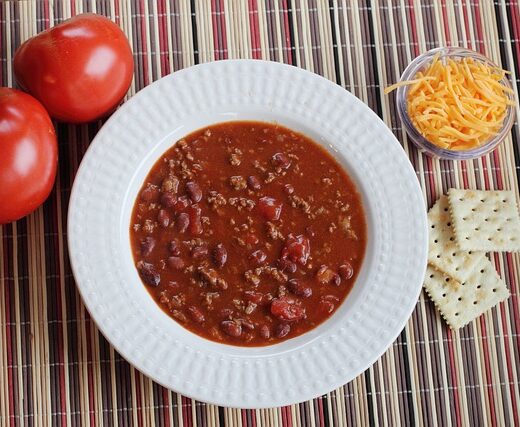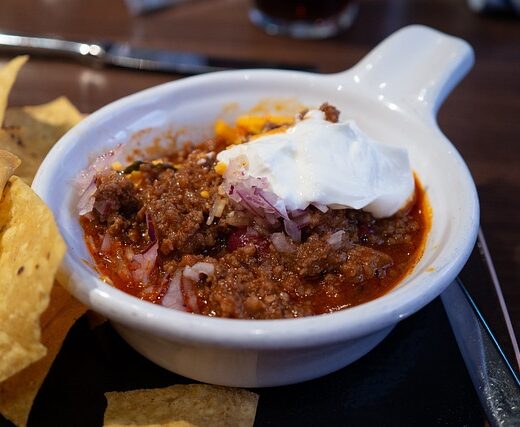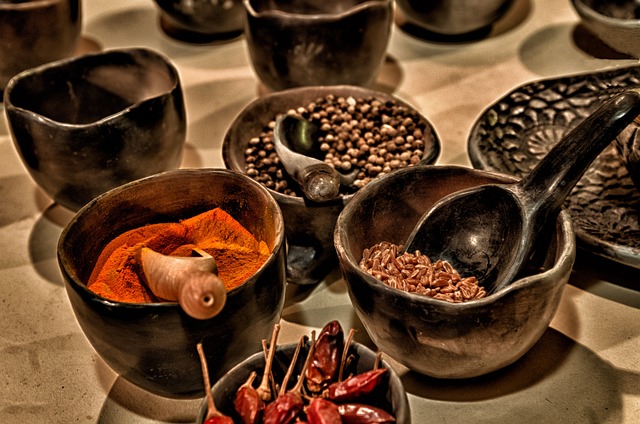If you’re just joining us be sure to check out Part 1 of this story. Let’s go a little bit around the nation in search of your preferred chili. Surprisingly, I’ve tried each kind. All were worth the tasting, albeit some were too spicy for my stomach and palate.
Austin Red
San Antonio is credited with creating the first chili. It is claimed to be a bowl of “red” made up of tender, individually cooked beef chunks covered in a fiery, cumin-spiked sauce produced from red chilies. This gives the food an appetizing russet color. Texans are highly proud of their ancestry.

The Texas legislature declared chili the state dish in 1977, even though their joint motions in the US Congress were unsuccessful. A true son or daughter of Texas has his taste buds tingle at the prospect of the treat that is real, honest-to-goodness, pure Texas chili. The following sentence goes on to say that only Texans are capable of creating the “best and only authentic combination of this pungent delicacy.” The resolution declares chili the official food of Texas and ends by stating that “the only authentic ‘bowl of red’ is that cooked by Texans.”
The trickery here isn’t particularly deft, but the message is clear: In Texas, chili isn’t considered chili until it’s served in a bowl of red. The fundamental guideline is that it must absolutely not contain any form of filler, with beans being the worst offender. The use of tomatoes in chili is still up for controversy, and a Texas Monthly full-article rebuttal of a chili recipe that appeared in the New York Times in January 2015 focused on the use of coriander seed in particular. In the end, you can only argue with other Texans about what should and shouldn’t be included in the meal if you’re a native Texan, at which point you’ll know whether anything is genuinely Texas chili. “No beans” is about as conclusive as it gets for the rest of us.

Springfield “Chilli”
Illinois’ version of chili is “chilli,” with two l’s, not “chili.” It is unknown how this spelling came to be; it may have been the result of a sign painter’s mistake at one of the state’s first chili joints or an attempt to spell “Illinois” similarly. Joe DeFrates, (winner of both the World and National Chili Championships), according to the ICS, first began serving up his signature recipe in Illinois. It included a secret spice blend containing chilli powder, a dash of Tabasco, etc., only known to Joe. He mixed this into a pot of tender ground beef and Hunt’s canned tomato sauce. Springfield, the state capital, is also regarded as the state’s capital of chili.
As evidence that Illinoisans take their chili almost as seriously as Texans do, the Illinois House and Senate passed a joint resolution in 1993 designating the state as “The Chilli Capital of the World .”The city of Taylorville, which hosts many chili cook-offs, was controversially dubbed the “Chilli Capital of Illinois” by the Illinois General Assembly in 2016.

Cincinnati Style chili
Cincinnati chili’s origins are in New York and Greece, not in the Southwest, like many of the other chilis on this list. When the Greek-Macedonian brothers John and Tom Kiradjieff immigrated to Cincinnati in the early 20th century, they opened restaurants selling coneys, which were hot dog sandwiches covered in spicy meat sauce, like many other Greek immigrant restaurateurs at the time. (Coneys and coney sauce are different regional delicacy that is nonetheless connected to chili and is particularly popular in Michigan but is common throughout the Midwest.) The brothers included elements that belonged in Mediterranean cooking, like paprika and allspice, as well as the particular combination of cinnamon and chocolate used in the style. The stew also included cumin, meat, and some chili pepper.

Cincinnati chili is further distinguished by the fact that it is frequently served over spaghetti and topped with an abundance of bright yellow cheddar cheese shreds. The chili is served in one of five different ways, which the locals refer to as “ways.”
Ways
- One denotes a single serving of chili
- two means chili and spaghetti
- three means chili, spaghetti, and cheese
- four means chili, spaghetti, cheese, and either beans or onions
- five denotes the entire meal, containing both beans and onions.
Other criteria include serving the chili on an oval plate, whether you use your fork to cut or twirl the spaghetti, and the need to gradually establish your own style. All of these rules are in keeping with the hyper-regimented ordering manner.

Oklahoma Style Chili
According to all accounts, Oklahoma chili is extremely similar to the Texas bowl of red. The primary exception is how much less adamant Okies are about banning items like beans and masa. According to the history of chili written by the Oklahoma Historical Society, Oklahoma has never encountered a chili it didn’t like. Along with coneys and coney sauce, Oklahomans love both the Texas and Cincinnati varieties. I turned to my cousin and his wife an Oklahoma native, for some advice because it’s difficult to define the state’s chili style, possibly as a result of this open-armed mentality. Her reaction? Does Oklahoma chili exist? Absolutely, it is. And even if it’s elusive, it almost surely contains beans.

Chile Verde
There are a few ways that chile verde varies from its rustier relatives: Pork is the preferred meat, tomatillos are used in the sauce, fresh chile peppers are used, and cumin is usually omitted from the stew. For some people, especially those who live in New Mexico, chile verde isn’t truly chile verde unless it’s made with Hatch chiles, any of the many types of chilies that are grown in and near the New Mexico community of Hatch. Despite the fact that the ICS defines “chili verde” (yup, with an I ), green chili peppers are cooked with any meat or combination of meats, various spices, and other ingredients. But with the no BEANS and PASTA. À true New Mexican chile verde is distinguished by the smoky flavor that comes from roasted Hatch chilies, which give the stew a welcome peppery sweetness and a hint of bitterness. As a consequence, succulent morsels of cooked pork are encircled by a rich green sauce that has been strengthened by melted fat.

White Chilli
White chili is a type of chili because it has meat and is made with chili peppers, but it is also unique because it frequently comprises shredded chicken or turkey. Similar to chile verde, it also begins with a base of fresh peppers, white chili forges its own route by using white beans and is frequently served with a mountain of shredded cheese.

Vegetarian Chili
The 1960s and 1970s vegetarian trend gave rise to the invention of vegetarian chili. While a meat substitute may occasionally be utilized, adding beans or other vegetables, such as sweet potatoes, will frequently be sufficient to produce a dish that is just as flavorful and nuanced as more traditional chilis. Sweet potatoes also lend an unusual texture to a chili. Naturally, since vegetarian chili isn’t really a style as much as it is a dish without meat, it can be prepared using fresh or dried chilies, and there are no restrictions on any ingredients besides no meat.
I don’t know about you, but I’m craving for a nice big bowl of chili, with some crackers…no cornbread. Yeah! See you later gotta run.

Leave a Reply